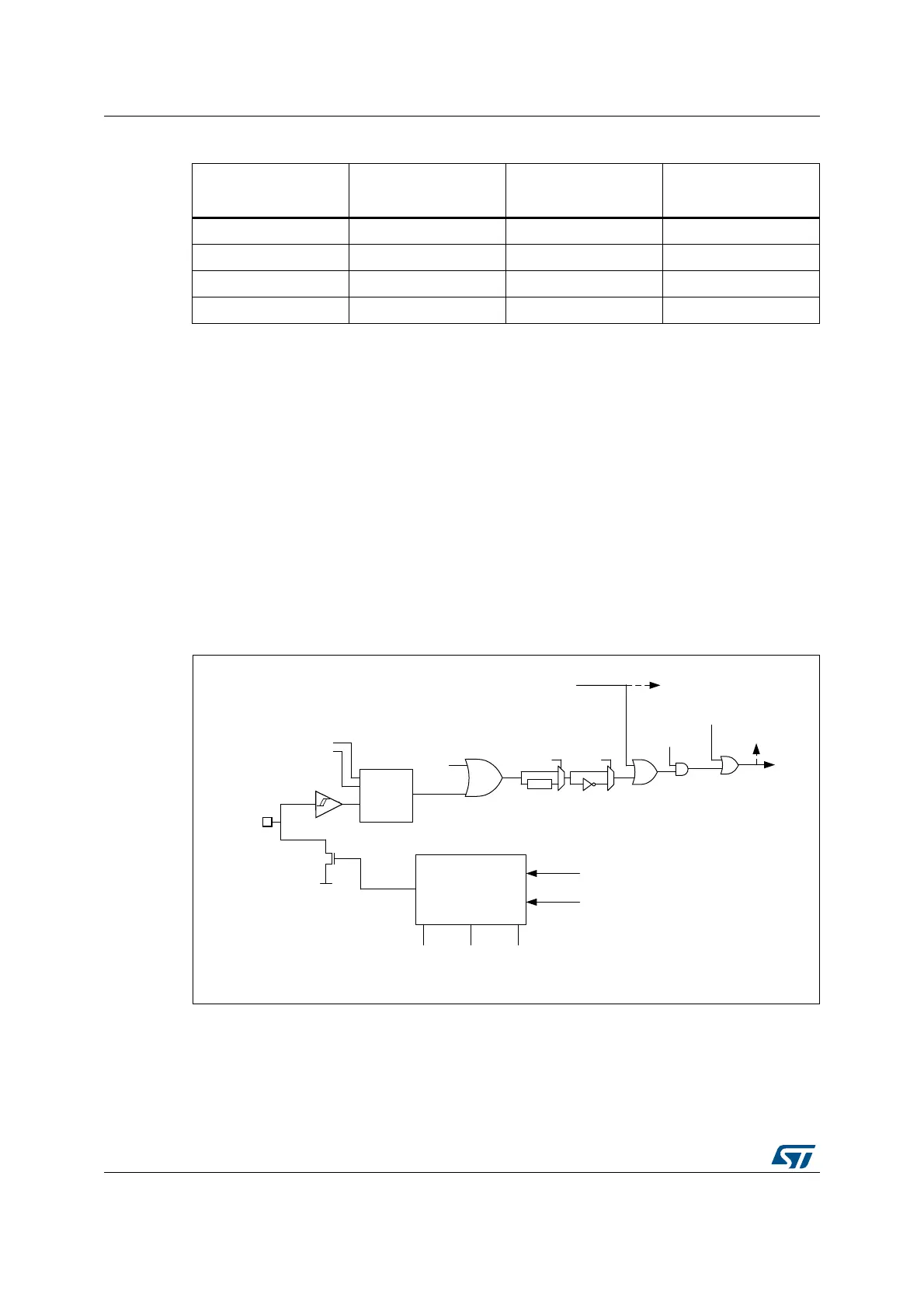Advanced-control timers (TIM1/TIM8/TIM20) RM0440
1138/2126 RM0440 Rev 4
Arming and re-arming break circuitry
The break circuitry (in input or bidirectional mode) is armed by default (peripheral reset
configuration).
The following procedure must be followed to re-arm the protection after a break (break2)
event:
• The BKDSRM (BK2DSRM) bit must be set to release the output control
• The software must wait until the system break condition disappears (if any) and clear
the SBIF status flag (or clear it systematically before re-arming)
• The software must poll the BKDSRM (BK2DSRM) bit until it is cleared by hardware
(when the application break condition disappears)
From this point, the break circuitry is armed and active, and the MOE bit can be set to re-
enable the PWM outputs.
Figure 320. Output redirection (tim_brk2 request not represented)
28.3.20 Clearing the tim_ocxref signal on an external event
The tim_ocxref signal of a given channel can be cleared when a high level is applied on the
tim_ocref_clr_int input (OCxCE enable bit in the corresponding TIMx_CCMRx register set to
1). tim_ocxref remains low until the next update event (UEV) occurs. This function can only
Table 259. Break protection disarming conditions
MOE
BKBID
(BK2BID)
BKDSRM
(BK2DSRM)
Break protection state
0 0 X Armed
0 1 0 Armed
0 1 1 Disarmed
1 X X Armed
MSv62340V1
BKIN inputs from
AF controller
BKF[3:0]
Filter
BKP
BKE
BRK
request
BIF flag
SBIF flag
tim_sys_brk
tim_brk_cmp1..7
AF
controller
mode control logic
MOE BKBID BKBDSRM
tim_brk request
System break request
Bidirectional
Break I/O
TIM_BKIN
Other break inputs
Application break requests
Vss
Bidirectional
AF input
(active low)
AF output
(open drain)
Software break
requests: BG
tim_brk

